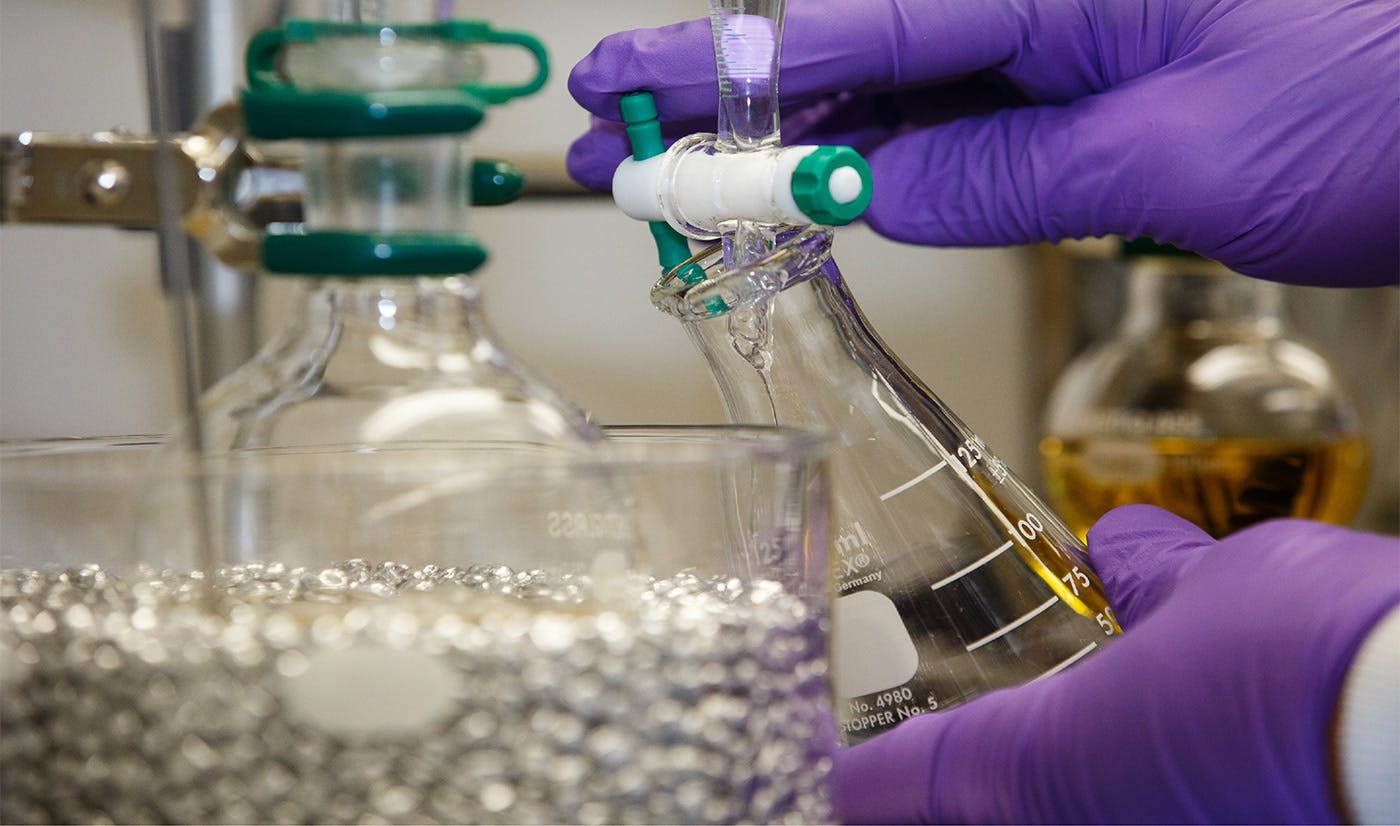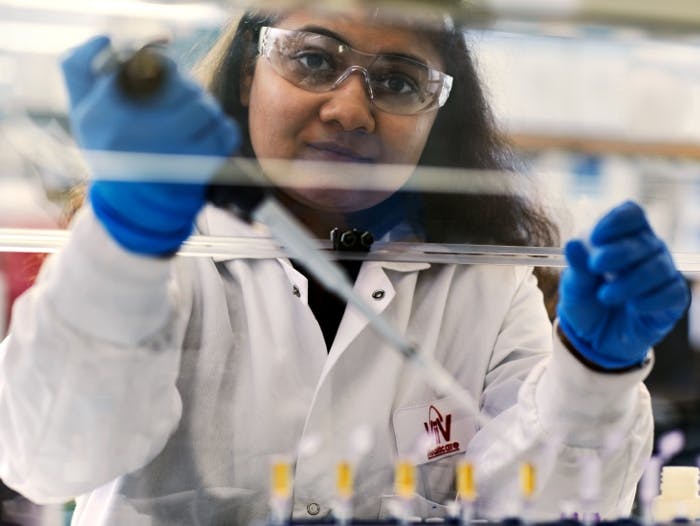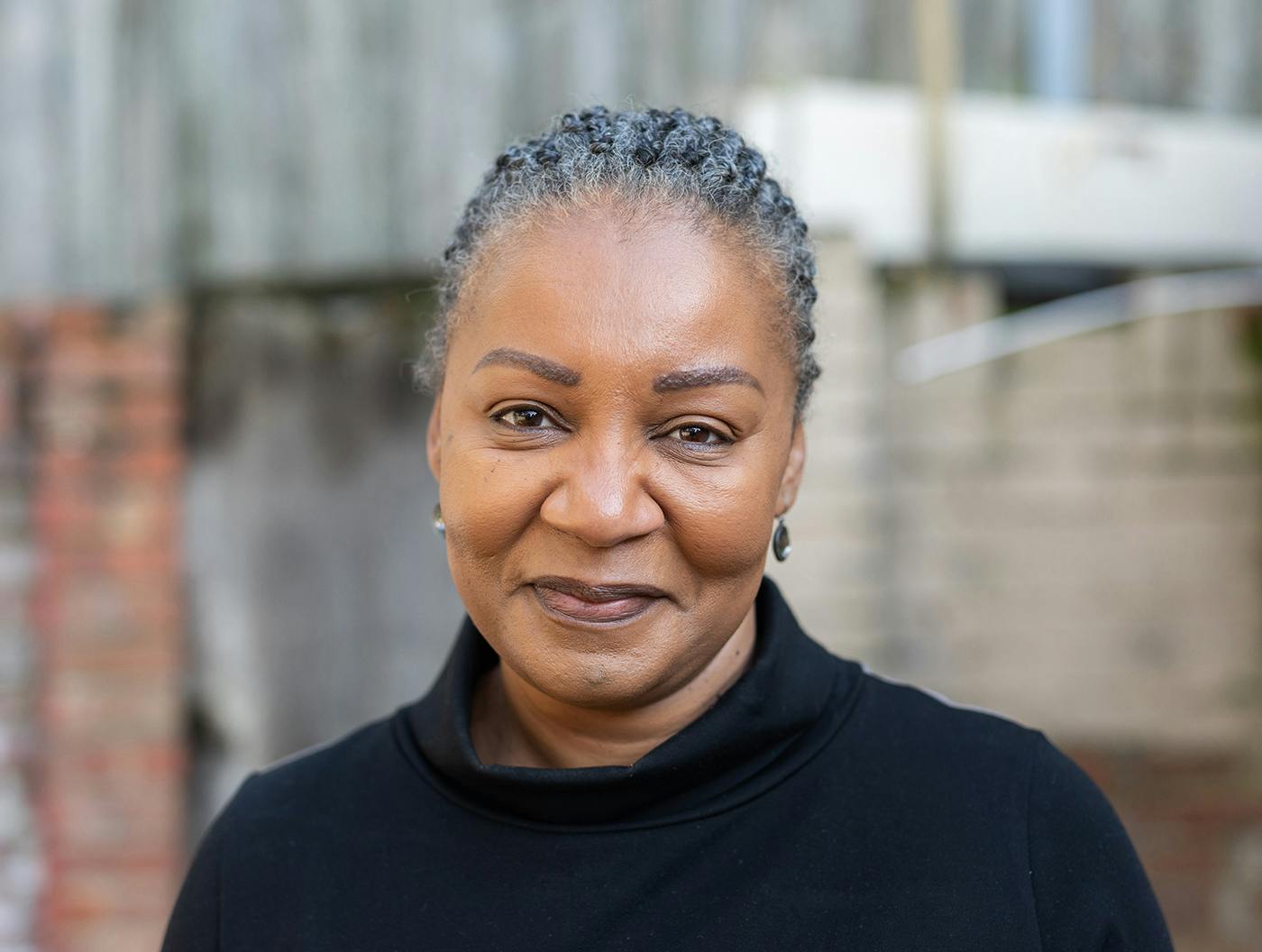WHAT ARE HIV CLINICAL TRIALS AND STUDIES?
Clinical trials are carefully designed and controlled research studies that evaluate the safety, effectiveness, and potential side effects of new or approved medicines, medical devices, treatments, or procedures in people.1
Investigational medicines are pharmaceutical substances being studied and tested as part of the research and development process in order to obtain approval for treating specific medical conditions or addressing patient needs when treatment options are limited.2 Once a medicine has received approval from regulatory authorities such as the US Food and Drug Administration (FDA) or European Medicines Agency (EMA), it may be prescribed by healthcare professionals as directed by the drug’s label.
Clinical trials can also uncover new ways to use an existing medicine or medical device or discover new ways to change behaviours that can improve health.1
Clinical trials are often called clinical studies, research studies, or clinical research studies, but these terms are interchangeable. HIV clinical trials help researchers find new or better ways to prevent, detect, and treat HIV and AIDS.1 Every currently approved HIV treatment has been studied through a number of clinical trials.1
Why are HIV clinical trials and studies important?
HIV research studies are important because in order for new HIV or AIDS treatments to be approved, they need to first be rigorously tested in clinical trials. These trials examine the required dose of a potential HIV drug in order for it to produce a response (also known as efficacy), and its side effects to understand the drug's safety profile. Most clinical trials used for approval compare treatments against placebo (or an inactive drug) or other existing treatments. Because of the commitment and support of so many people who have taken part in clinical trials for HIV, society has witnessed significant progress in the fight against the epidemic.
The HIV epidemic initially lacked safe and effective therapies. However, today, numerous highly effective HIV treatments referred to as antiretroviral therapy (ART) are available. ART involves combining multiple antiretroviral (ARV) drugs. These treatments enable individuals living with HIV to suppress the virus to undetectable levels, preventing its transmission. In simpler terms, undetectable means untransmittable, which is often abbreviated as U=U.
A functional cure for HIV has not yet been achieved or widely replicated in clinical practice.3 A ‘functional’ cure describes a state in which the virus is fully suppressed and under long-term control by the body's immune system without needing treatment.3,4 Several avenues are being explored to achieve this goal, including gene editing technologies such as CRISPR-Cas9, therapeutic vaccines, immune-based interventions, and studies of elite controllers (people who can naturally suppress HIV without ART).5,3
There are ongoing clinical trials with HIV-positive patients that aim to achieve an HIV functional cure. This would represent a major advancement in the battle against HIV, alleviating the lifelong responsibility of continuous medication.6 The need to take lifelong treatment can have a significant emotional and physical toll on people living with HIV. As a result, further HIV research studies are seeking to help healthcare professionals improve patients' well-being and quality of life.
HIV treatment and prevention clinical trials
HIV clinical trials are also assessing preventative measures against the virus, such as pre-exposure prophylaxis medication (PrEP).
PrEP was first found to be effective in 2010 in a HIV prevention clinical trial.7 In the trial, participants who regularly took PrEP had a 92% lower chance of acquiring HIV than participants who had taken the placebo.7 Subsequently, the first PrEP medication was approved by the FDA in 2012.7
Furthermore, clinical trials for HIV are looking to discover a potential HIV vaccine; to date there is no approved HIV vaccination.5 Unfortunately Mosaico (2019), the most recent large-scale phase 3 clinical trial for an HIV vaccine, was shown to be ineffective and discontinued.8 Mosaico tested an experimental vaccine regimen in 3,900 volunteers.8
However, ongoing HIV studies are increasingly targeting cells in the immune system containing HIV but are not actively producing new virus cells (this is called the ‘latent reservoir’); promising results in the laboratory may lead to human clinical trials for an HIV cure.9
All these approaches show the monumental challenge of finding a cure for HIV, and the long-term commitment that’s required to achieve it. Here at ViiV Healthcare, it is our life’s work to end the HIV epidemic, and we will be here until HIV isn’t.
Leaders in the HIV clinical trials space
ViiV Healthcare collaborates with over 50 pharmaceutical and biotechnology companies, government agencies, academic institutions, and not-for-profit organisations to address HIV challenges around the world.
We want to ensure that there are no discrepancies between HIV care in clinical trials and what happens in the real-world. This has led to us tackling barriers to HIV treatment such as transport to and from clinics or pharmacies, unconventional working hours, childcare and family demands, and the availability of services and resources.
As leaders in the HIV space, and with aspirations to help end the HIV epidemic, we are in pursuit of a cure for HIV. We are here until HIV isn’t.
ARE HIV CLINICAL TRIALS SAFE?
HIV clinical trials, like any other type of clinical trial, are overseen by the specific regulatory bodies of the countries in which they take place. Regulatory bodies are government agencies that oversee and approve clinical trials.
For example, in the UK, the Medicines and Healthcare Products Regulatory Agency (MHRA) is the regulatory authority responsible for clinical trial approval, oversight, and inspections. The MHRA sets legal and safety standards to ensure that the trials comply with national and international regulations.10 Similar regulatory authorities exist in other continents/countries, such EMA in Europe, and the FDA in the US.
Clinical trials generally follow a pre-clinical stage, often in animal models, and move through a series of phases: phase 1, phase 2, phase 3, and phase 4.11 With each progressing stage of the clinical trials, more participants are recruited, and the primary goal shifts from safety and method of administration to the treatment’s efficacy, side effects and overall benefits. These phases help determine whether a treatment is well-tolerated before it is widely available to the public.11
Below is an overview of the different phases of a typical clinical trial, their number of participants, and their primary objectives.11,12
Phase |
Length of time |
Number of participants |
Primary objectives of the phase |
|---|---|---|---|
| Phase I | Less than 1 year |
20-100 |
|
| Phase II | A few months to 2 years |
~300 |
|
| Phase III | 1-3 years | 300 to 3,000 |
|
| Phase IV | Many years | Thousands |
|
WHY IS DIVERSITY WITHIN CLINICAL TRIALS IMPORTANT?
Diversity within clinical trials is paramount to overcoming healthcare disparities that affect marginalised groups.13Across the world, factors such as race, ethnicity, gender identity, or income level impact certain groups’ health and access to healthcare.13 So, diverse trials can help reduce health inequities by including these populations and account for the specific challenges they face.13 Including a broad range of trial participants from a variety of demographics ensures that research findings are applicable to a large number of people, making the research findings more generalisable and advancing our understanding of medical science.15
Failing to include underrepresented groups in clinical trials may deny them access to potentially life-saving treatments and scientific advancements.14 Lack of representation directly leads to a lack of access to effective therapies; this has previously occurred in an HIV clinical trial, for example, where only cisgender men and transgender women were recruited in a Phase III PrEP study.14
Finally, diversity in clinical trials can lead to safer and more effective treatments. This is because genetic, metabolic, and physiological variations in people can influence drug responses and the safety and efficacy of treatments.16 For instance, some HIV medications may work differently in men and women because of factors like weight, blood protein levels, and how the body processes the drugs.17 The under-representation of women in HIV clinical trials causes gaps in scientific knowledge about HIV in women and how antiretroviral therapy (ART) in women may behave differently compared to men.
As part of our inclusion and diversity pledge at ViiV Healthcare, we are actively committing to more diverse clinical trials to combat healthcare disparities.
HOW CAN I PARTICIPATE IN AN HIV CLINICAL TRIAL OR STUDY?
Speak to your local healthcare provider if you would like to participate in a clinical trial for HIV. Your clinician can provide resources and expertise that can inform your decision to join the trial.
All clinical trials have a set of rules about who can and cannot join (called inclusion and exclusion criteria). No two clinical trials are the same, so it is important for people to be thoroughly informed about a trial before enrolling in one.
You can find and register for HIV clinical trials at the ViiV study register or clinical trials.gov.
Deciding to join an HIV clinical trial
Each clinical trial will have its specific benefits and risks. The clinical trial team will clearly explain them to you before you decide to take part. Below is a broad overview of some pros and cons of taking part in clinical trials for HIV.
Benefits of participating in HIV clinical trials |
Negatives |
|---|---|
Access to cutting-edge investigational medications that may be more effective than existing medications and may not be widely available through conventional methods.18 Participants often receive more frequent and comprehensive health check-ups free-of-charge, providing more widespread overall healthcare.19 Participants may gain knowledge and courage to learn more about HIV matters, even convincing their friends/family to do the same. They may also establish networks with the research team.19 Contributing to the advancement of future medical knowledge, leading to better therapies which may benefit other people with HIV.18 |
The investigational medication may not work or may not work better than the medication you are currently taking. You may be given a placebo (an inactive substance that contains no medication). HIV clinical trials can require a lot of time and hospital/clinic visits, and may involve complex dosing schedules.18,20 The side effects of the investigational medication may not be fully known, which can create uncertainty. All medical treatments carry risks, and clinical trials for HIV would be no exception.18,20 |
YOU MAY ALSO BE INTERESTED IN
The process of identifying, creating and developing generally well-tolerated and effective innovative HIV therapies is complex and requires ongoing collaboration between research teams that work in many different areas of medicines development.
Women make up more than half of all people living with HIV – why are they under represented in studies of new medicines?
To lift the substantial burdens of daily treatment and social stigma associated with HIV, a cure is essential towards accomplishing our goal of ending the HIV epidemic. With this goal in mind, we are in pursuit of a cure for HIV.
References:
- HIV and AIDS Clinical Trials. (n.d.). Nih.Gov. Retrieved 10 October 2023, from https://hivinfo.nih.gov/understanding-hiv/fact-sheets/hiv-and-aids-clinical-trials
- Office of the Commissioner. (2019, December 20). Understanding Investigational Drugs. U.S. Food and Drug Administration. https://www.fda.gov/patients/learn-about-expanded-access-and-other-treatment-options/understanding-investigational-drugs
- Kwan TH, Chan CP, Wong NS, Lee SS. Awareness of HIV functional cure and willingness in participating in related clinical trials: comparison between antiretroviral naïve and experienced men who have sex with men living with HIV. BMC Infectious Diseases. 2022 Apr 15;22(1):383. https://doi.org/10.1186/s12879-022-07346-x
- Bailon L, Mothe B, Berman L, Brander C. Novel approaches towards a functional cure of HIV/AIDS. Drugs. 2020 Jun;80(9):859-68. doi: 10.1007/s40265-020-01322-y
- Hussein M, Molina MA, Berkhout B, Herrera-Carrillo E. A CRISPR-Cas Cure for HIV/AIDS. International Journal of Molecular Sciences. 2023 Jan 13;24(2):1563. doi: 10.3390/ijms24021563
- Our Approach to an HIV Cure. (2018, March 28). American Gene Technologies. https://www.americangene.com/pipeline/hiv-aids/
- Pre-exposure Prophylaxis (PrEP) to Reduce HIV Risk. (n.d.). Nih.Gov; National Institute of Allergy and Infectious Diseases. Retrieved 10 October 2023, from https://www.niaid.nih.gov/diseases-conditions/pre-exposure-prophylaxis-prep
- Experimental HIV vaccine regimen safe but ineffective, study finds. (2023, January 18). National Institutes of Health (NIH). https://www.nih.gov/news-events/news-releases/experimental-hiv-vaccine-regimen-safe-ineffective-study-finds
- Nixon CC, Mavigner M, Sampey GC, Brooks AD, Spagnuolo RA, Irlbeck DM, Mattingly C, Ho PT, Schoof N, Cammon CG, Tharp GK. Systemic HIV and SIV latency reversal via non-canonical NF-κB signalling in vivo. Nature. 2020 Feb 6;578(7793):160-5. doi:10.1038/s41586-020-1951-3
- Clinical Research Regulation For United Kingdom | ClinRegs. Nih.gov. Published 2023. Accessed October 11, 2023. https://clinregs.niaid.nih.gov/country/united-kingdom
- Phases of clinical trials. Cancer Research UK. Published October 21, 2014. Accessed October 11, 2023. https://www.cancerresearchuk.org/about-cancer/find-a-clinical-trial/what-clinical-trials-are/phases-of-clinical-trials
- Phases of clinical trials. American Kidney Fund. Published November 2, 2021. Accessed October 18, 2023. https://www.kidneyfund.org/treatments/clinical-trials/phases-clinical-trials
- Diversity and Inclusion in Clinical Trials. NIMHD. Published 2021. Accessed October 12, 2023. https://www.nimhd.nih.gov/resources/understanding-health-disparities/diversity-and-inclusion-in-clinical-trials.html
- National Academies of Sciences, Engineering, and Medicine; Policy and Global Affairs; Committee on Women in Science, Engineering, and Medicine; Committee on Improving the Representation of Women and Underrepresented Minorities in Clinical Trials and Research; Bibbins-Domingo K, Helman A, editors. Improving Representation in Clinical Trials and Research: Building Research Equity for Women and Underrepresented Groups. Washington (DC): National Academies Press (US); 2022 May 17. 2, Why Diverse Representation in Clinical Research Matters and the Current State of Representation within the Clinical Research Ecosystem. Available from: https://www.ncbi.nlm.nih.gov/books/NBK584396/
- Schwartz AD, Alsan M, Morris AA, Halpern SD. Why Diverse Clinical Trial Participation Matters. The New England Journal of Medicine. 2023;388(14):1252-1254. doi:https://doi.org/10.1056/nejmp2215609
- Gross AS, Harry A, Clifton CS, Oscar Della Pasqua. Clinical trial diversity: An opportunity for improved insight into the determinants of variability in drug response. British Journal of Clinical Pharmacology. 2022;88(6):2700-2717. doi:https://doi.org/10.1111/bcp.15242
- Waters L, Ahmed C, Angus B, et al. BHIVA Guidelines for the Treatment of HIV-1-Positive Adults with Antiretroviral Therapy 2015 (2016 Interim Update) Writing Group.; 2016. https://www.bhiva.org/file/RVYKzFwyxpgiI/treatment-guidelines-2016-interim-update.pdf
- The pros and cons of taking part in a clinical trial. Cancer Research UK. Published October 21, 2014. Accessed October 17, 2023. https://www.cancerresearchuk.org/about-cancer/find-a-clinical-trial/what-you-should-be-told-about-a-clinical-trial/advantages-and-drawbacks
- Tarimo EA, Ambikile J, Munseri P, Bakari M. Perception of potential harm and benefits of HIV vaccine trial participation: A qualitative study from urban Tanzania. PLoS One. 2019 Nov 8;14(11):e0224831. https://doi.org/10.1371/journal.pone.0224831
- Benefits, Risks, and Safety Measures. NHLBI, NIH. Published March 24, 2022. Accessed October 17, 2023. https://www.nhlbi.nih.gov/research/clinical-trials/safety-benefits-risks
NP-GBL-HVX-COCO-240004 | February 2024
If you get any side effects, talk to your doctor, pharmacist or nurse. This includes any possible side effects not listed in the package leaflet. You can also report side effects directly via the Yellow Card Scheme at www.mhra.gov.uk/yellowcard or search for MHRA Yellowcard in the Google Play or Apple App store. By reporting side effects, you can help provide more information on the safety of this medicine.
If you are from outside the UK, you can report adverse events to GSK/ViiV by selecting your region and market, here.



